How entrepreneur Sandro Roco built a multi-channel community around his Asian-inspired sparkling water, Sanzo

Sandro Roco is a founder, not an actor. His sparkling water brand, Sanzo, can be found in Foxtrot, Panda Express, and, as of April, Whole Foods locations nationwide.
But twist: In September 2021, he walked the red carpet at Disney’s Shang-Chi and the Legend of the Ten Rings premiere.
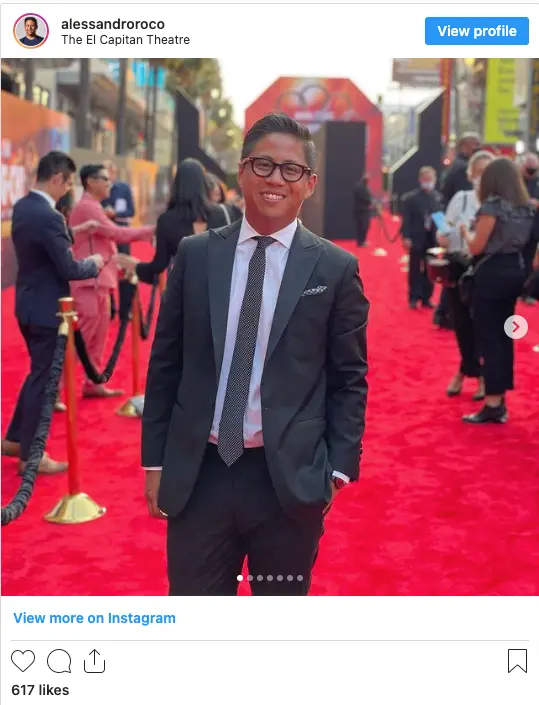
“It was a pretty hallmark moment for the Asian American community seeing one of our own become a Marvel superhero,” Roco says.
Roco, who is Filipino American, attended after collaborating with Marvel on a co-branded sparkling water, released at the same time as Shang-Chi. The red and white cans featured one of the film’s four main characters on the outside; inside the cans was Sanzo’s best-selling flavor, lychee, made with lychee puree.
The Marvel sparkling water launch was a big moment for Roco’s business. Sales had grown at least 400% each year since he founded Sanzo in 2018, but the month of the Shang-Chi sparkling water launch, Sanzo saw 6x growth in ecommerce revenue.
That lift didn’t just come from paid spend. It also came from savvy email marketing. Sanzo’s email subscribers got first dibs on the co-branded sparkling water, and they bought it.
“Having a healthy, engaged email base that we know we can monetize well allows us to sign these kinds of brand partnership deals,” Roco says. “We know that at the base of it, we can activate the community around it.”
A brand that began in a home kitchen
Roco prototyped Sanzo’s formula alone in his Queens apartment, concocting sparkling water and fruit puree blends with measuring cups and a kitchen scale.
He wanted to celebrate the tropical flavors of his childhood. Roco grew up drinking fruit drinks, but he can’t drink them on a regular basis now. “They’re too sugary.”
Today, Sanzo offers four fruit flavors—lychee, mango, calamansi, and yuzu with ginger—with no sugar, additives, or preservatives.
Roco hoped these flavors would resonate with an Asian American audience, especially women, and he hired woman-owned creative agency The Working Assembly to develop his branding.
In 2020, the agency’s founder and creative director Jolene Delisle told Medium that the look of Sanzo packaging was inspired by Filipino jeepneys—rainbow-colored public transit vehicles painted with everything from Catholic saint iconography to 15 SpongeBob SquarePants faces.
In that spirit, Sanzo’s colorful cans feature geometric cartoon fruit, bold sans-serif lettering, and a dot motif that reflects the bubbly beverage within.
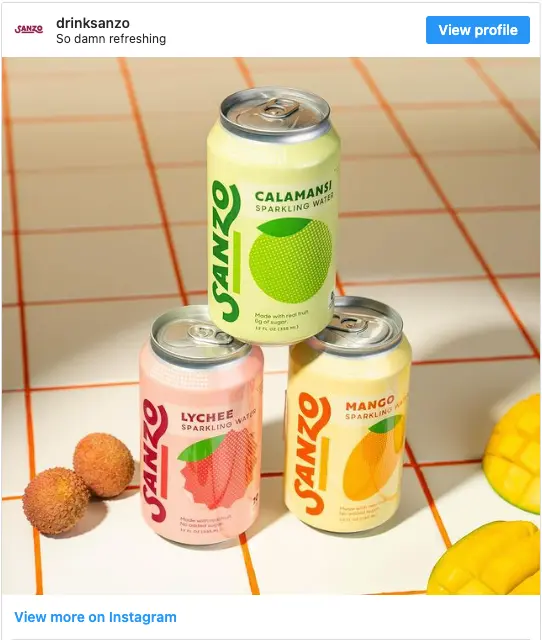
Roco wanted Sanzo to reach a broader audience, too, and share flavors the Asian American community knows and loves with Americans at large. “Flavors like these have been stuck in the ‘ethnic’ aisle for too long, and if this happens to be the medium through which it gets out there, so be it,” Roco told Grub Street in 2019.
He just needed a way to spread the word. That posed some unusual challenges—especially because Sanzo launched during a volatile time.
The agony and ecstasy of pandemic sparkling water sales
The scary early days of the pandemic had a silver lining for Roco’s nascent business: selling sparkling water through his Shopify storefront.
Ecommerce revenues abruptly surged as consumers tried to avoid COVID-19 exposure in stores. IBM estimated that the pandemic accelerated ecommerce adoption by roughly 5 years, and online grocery shopping boomed with the rest of ecommerce.
From 2019 to 2020, online grocery revenues’ share of total grocery revenues more than doubled, jumping from 3.4% to 8.1%, according to a report by Brick Meets Click and Mercatus.
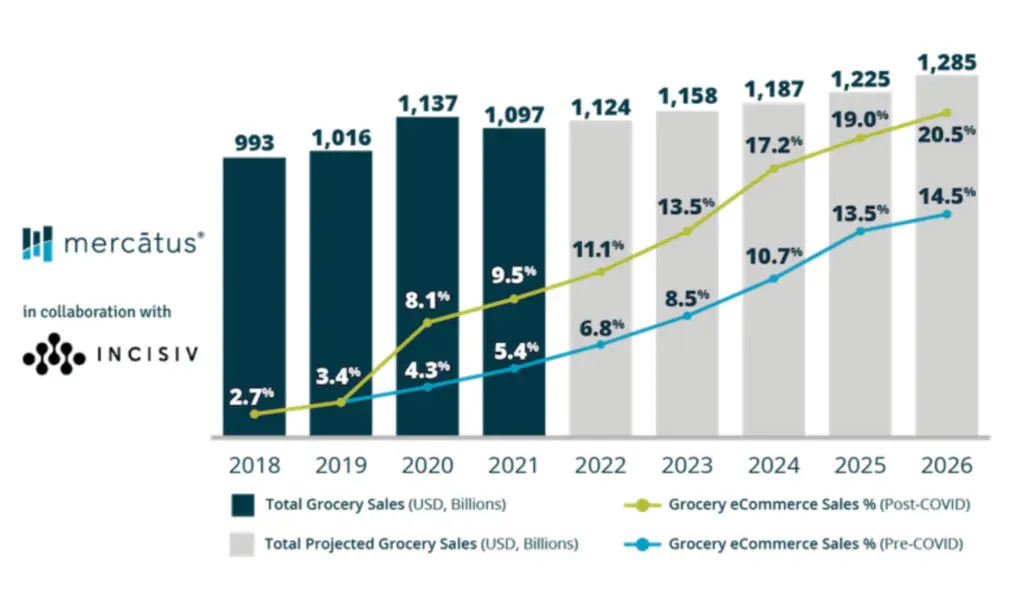
It didn’t hurt Sanzo that the rollout of work-from-home meant that thousands of tech workers lost access to their free office sparkling water supplies. From March to June 2020, Sanzo’s monthly sales tripled, Business Insider reported.
Ultimately, though, those tailwinds were temporary. Sanzo couldn’t ride them into 2021 and beyond.
For one, the ecommerce revolution looks increasingly like a blip—ecommerce’s overall market share has reverted more or less to the pre-COVID trendline, according to data from the U.S. Census Bureau.
To complicate matters further, in 2021, the bread and butter of DTC marketing—Facebook Ads —lost major efficacy to Apple’s iOS 14.5 update. The privacy-first mobile update meant Facebook could no longer target ads as precisely as it used to, or track conversions reliably.
New customer acquisition costs—or, as Roco puts it, “the top-of-funnel tax”—skyrocketed for ecommerce brands. Online grocery shoppers were more expensive to reach, and their share of the overall market was barely growing.
Even though online grocery sales doubled during COVID, over 90% of grocery shopping still happened in person, according to the Brick Meets Click report.
And from 2020 to 2021, online grocery revenues’ share of total grocery revenues stayed almost flat, growing only slightly from 8.1% to 9.5%, according to the same report.
To really unlock the next level of growth for Sanzo, Roco needed to do a few things:
- Cultivate a community, to boost customer lifetime value and defray rising paid social costs.
- Develop a wholesale business, to supplement Sanzo’s DTC sales and reach customers where they primarily buy sparkling water.
- Raise funding to help offset the often months-long delays between production costs (which Roco pays before production starts) and wholesale revenues.
Sanzo’s multi-channel community playbook: email, social, events
For Roco, community is a multi-channel affair. “If you have an engaged community, it’s across channels,” he explains.
To date, Sanzo has built community across three main channels:
- Organic social
- In-person events
Email integrates direct outreach and wholesale retail
When Roco first signed up for Klaviyo in late 2020, he didn’t use the functionality that set the unified customer platform apart. He kept Sanzo’s email program bare bones, sending transactional emails and a very occasional newsletter.
As wholesale revenues grew, the Sanzo team made a deliberate decision to invest in email.
The channel puts Sanzo in direct contact with customers who might otherwise just purchase from Whole Foods or Panda Express, and has helped the sparkling water brand nurture long-term relationships through storytelling, discounts, and feedback requests.
Today, Sanzo has a VIP email list for subscribers, who get free shipping and 15% off recurring orders. “We’ll also do some special swag drops for that group,” Roco adds—recall that they got early access to Sanzo’s Shang-Chi sparkling water, for example.
Email is the cornerstone of any company’s marketing strategy.
Sanzo has also invested in “creating awesome workflows, and doing better segmentation, based especially on geography,” and finds that “better and more targeted communications with our community” have led to higher open and click-through rates.
He celebrates every email address Sanzo collects, though—whether it’s from subscribers and shoppers who share their addresses, or a regular mailing list sign-up. Each new contact is “quite a win for us,” Roco says. After all, email is “the cornerstone of any company’s marketing strategy.”
Organic social puts a branded spin on trending topics
On Sanzo’s organic social accounts, Roco and his team blend impactful, inspiring stories with “a good meme every now and then,” he says. “We’re just trying to have some fun.”
Execution on that strategy looks different on Sanzo’s two pillar social channels: Instagram and TikTok. Stateside, Instagram is still more mature and monetized—though the average user spent nearly twice as many hours per month on TikTok than Instagram in 2021, according to an App Annie report.
On Instagram, organic posts and strategic paid boosts
Sanzo made its first Instagram post in 2018, and has amassed about 25K followers on the channel. But Instagram has become increasingly “pay to play,” as Roco puts it—so Sanzo’s marketing and CRM strategy blends organic and influencer posts with strategic paid boosts.
On Sanzo’s organic Instagram, the brand often posts:
- User-generated content from fans, like this candid selfie
- Reposts of press pull quotes in branded templates, like this Food Network feature
- Reposts from other owned social channels, like this TikTok repost highlighting Sanzo’s Whole Foods launch
- Trending memes with a Sanzo twist, like this one of Olivia Rodrigo and BTS star V
On the influencer front, Sanzo works with social stars directly, but also finds traction through retail and branding partners—especially Disney-owned Marvel, which Sanzo collaborated with on the Shang-Chi sparkling water.
“Being able to tap into both our influencer base as well as Disney’s has been pretty amazing,” Roco says. He’s never seen such an “unbelievable” outpouring of unscripted support and story reposting. Even Shang-Chi star Fala Chen herself posed for a photo double-fisting Sanzo.
Sanzo’s distinctive cans have also appeared in posts from from food and lifestyle influencers like @sanfooddiego and @ashleymarieblog_, tagged #pandaexpresspartner. The brand’s budget for paid boosting means that any post getting strong engagement—on the brand account and beyond—gets the reach it deserves.
On TikTok, a focus on top-of-funnel awareness
It’s relatively easy to get unpaid reach on TikTok. Sanzo has already had a viral hit since its TikTok launched in 2021: a video listicle of social missteps (like wearing shoes in bed!), titled “Things that make me want to drink boiling hot sparkling water.”
Reach to date: 3.6M+ views.
In the hopes of capturing even more free reach, Sanzo runs more top-of-funnel creative on TikTok than Instagram, with frequent posts about:
- Pop-culture topics, like Singles Inferno and the ideal drink for each cast member
- Trending sounds, like Taylor Swift’s “Enchanted”
- Sanzo’s success story—structured around trending sounds, of course
Sanzo’s focus so far has been organic TikTok posts, “finding our brand voice, and frankly trying to create content that does go viral,” Roco says.
However, the sparkling water brand will soon invest in TikTok ad spend, too. “We are starting to play around in paid,” Roco says. “We will do a lot more going into the summer months.”
At in-person events, taste-testing gets major ROI
In-person events are an increasingly key channel for Sanzo. “In the world of consumer-packaged goods, a big part of marketing is field marketing,” Roco says.
That’s especially true as concern about COVID declines, and splashy destination events return in 2022—like tech, film and music event SXSW, and, more recently, music festival Coachella.
In the world of consumer-packaged goods, a big part of marketing is field marketing.
Before you ask: Yes, Sanzo made an appearance at Coachella, though not on the actual festival grounds. “If you want to get on the grounds, you’re going to pay a good amount of money,” Roco points out.
It’s no wonder that Coachella’s official sponsors include global Fortune 500 companies, like Adidas, H&M, and American Express—they have the resources to invest in activations and compliance with Coachella’s extensive brand guidelines.
Still-growing startups can’t always afford major marketing swings like that. Roco found that co-sponsoring an invite-only event for influencers in the surrounding Coachella Valley worked for Sanzo this year. It doesn’t hurt that an ice-cold Sanzo pops in a desert climate.
House parties and pool parties are often cheaper than an in-festival activation, Roco explains: “It’s a good way to get started.”
Coachella is only the beginning of Sanzo’s events roster for the summer. Roco says the company will also activate at local food festivals across the country. “They actually don’t cost nearly as much as you might think, especially when you’re comparing to the amount of spend that someone will put into a Facebook campaign,” he says.
How a “rabid fan base” unlocks new growth horizons
Building a community that spanned email, social, and offline events helped Roco scale Sanzo after the rocky early-pandemic years. But he had other problems, too.
He still needed to develop the wholesale side of his business and fundraise to scale operations.
Sanzo’s hard-earned organic community helped him do both.
For one, it helped him build retail partnerships. Using geographic segmentation in Klaviyo, Roco could notify customers when a new retailer near them started carrying Sanzo. “You will see lift in local geographical sales when you do those kinds of blasts,” Roco says.
In other words, geotargeting matters for wholesale revenues. It also helped Sanzo scale retail partnerships. Case in point: Sanzo was only in Whole Foods locations on the East Coast back in October; as of March 2022, Whole Foods is selling Sanzo nationwide.
Community made fundraising easier for Roco, too—not that fundraising is ever easy. “Food and beverage companies are not cheap to operate, and they’re even more expensive to scale,” he explains.
Gross margins are thin—about 30-40% if you’re lucky, Roco says, while software margins are closer to 90%. And the pandemic made investors extra risk-averse when Roco was raising capital.
“The playbook for how you grow a food and beverage brand was changing overnight,” he says. Some investors couldn’t tell if any entrepreneur had what it took to succeed, and Roco was a relative unknown at the time.
The playbook for how you grow a food and beverage brand was changing overnight.
Nevertheless, in February 2022, Sanzo announced a $10M Series A round. The round was led by CircleUp Growth Partners, with a significant investment from the venture arm of Pernod-Ricard, the second largest wine and spirits seller in the world; Simu Liu, who portrays the titular character in Shang-Chi and the Ten Rings, invested too.
Clearly, Sanzo’s engaged community appealed to investors. “Sanzo stood out to us by delivering what consumers are looking for—innovative and bold flavors combined with a healthier nutritional profile and an authentic, rabid fan base,” says Patrick Robinson, managing director of CircleUp Growth Partners.
(Emphasis ours.)
Roco has already ticked a lot off most entrepreneur’s bucket lists, between successful fundraising, Whole Foods distribution, a Marvel collab, and a Coachella cameo. Next on his personal list: strategically growing his retail partner roster.
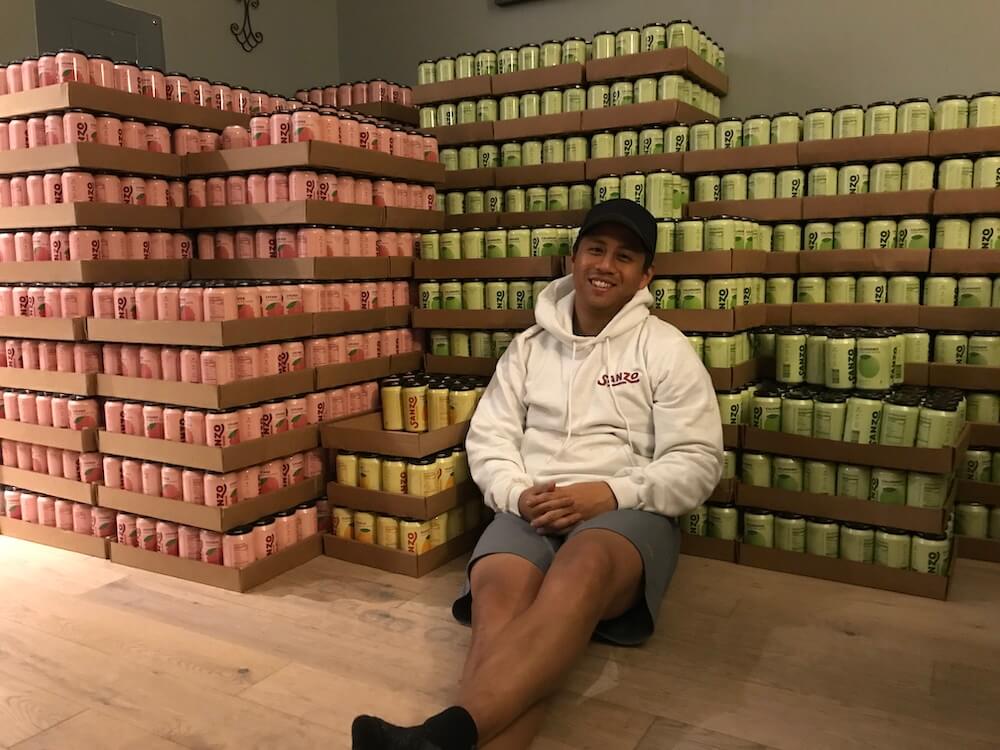
He sometimes sees the food and beverage industry press focus on the number of “doors,” or retail locations, stocking a given product nationwide—but that’s not a KPI he wants to maximize at Sanzo.
“This business is already expensive, and even more expensive when you’re spread out so thin,” he says. He’d rather earn $1M in revenue from one location than 30.
After all, Roco’s in his business for the long haul.
“If I got ridiculously wealthy off of this, I’m not going off to some island and sitting there for the rest of my life,” he told Medium in 2020. “My goal is to take that money and pile it back into the community.”

Related content
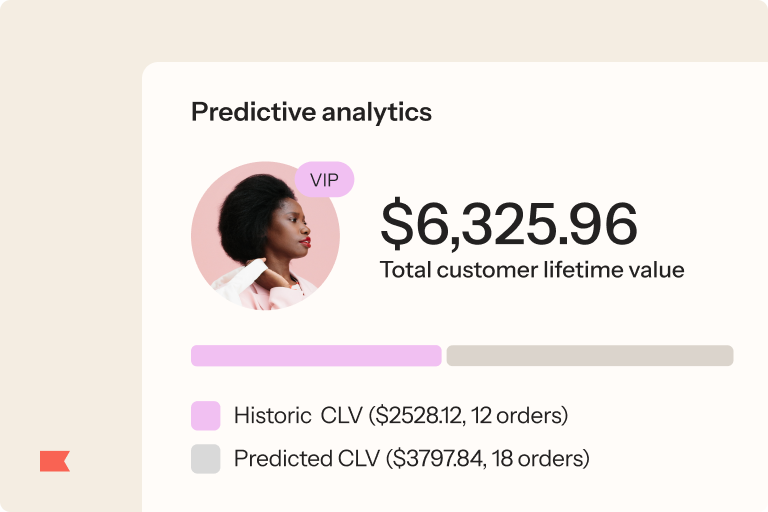
Discover how lifecycle marketing transforms your CRM into a growth engine, driving retention, automation, and personalized B2C customer experiences.

Turn Black Friday Cyber Monday traffic into long-term customers. Discover how Klaviyo Customer Hub helps you personalize shopping, reduce support tickets, and drive repeat purchases—all in minutes.

Learn how to market to Gen Z with actionable and timely insights from Klaviyo’s CMO, Jamie Domenici.